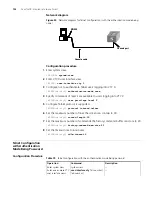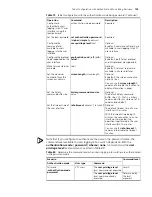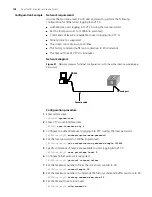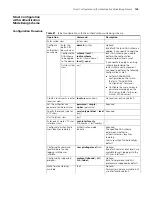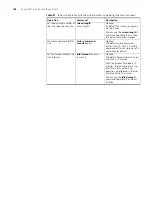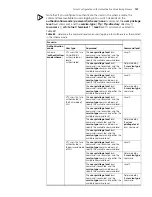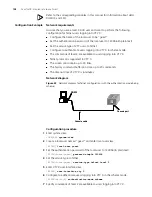
18
MAC A
DDRESS
T
ABLE
M
ANAGEMENT
This chapter describes the management of static, dynamic, and blackhole MAC
address entries. For information about the management of multicast MAC address
entries, refer to Chapter 29.
Overview
Introduction to MAC
Address Table
A MAC address table is a port-based Layer 2 address table. It is the base for Ethernet
switch to perform Layer 2 packet forwarding. Each entry in a MAC address table
contains the following fields:
■
Destination MAC address
■
ID of the VLAN which a port belongs to.
■
Forwarding port number.
Upon receiving a packet, a switch queries its MAC address table for the forwarding
port number according to the destination MAC address carried in the packet and
then forwards the packet through the port.
Entries in a MAC
Address Table
Entries in a MAC address table fall into the following categories according to their
characteristics and configuration methods:
■
Static MAC address entry: Also known as permanent MAC address entry. This type
of MAC address entries are added/removed manually and can not age out by
themselves. Using static MAC address entries can reduce broadcast packets
remarkably and are suitable for networks where network devices seldom change.
■
Dynamic MAC address entry: This type of MAC address entries are generated by
the MAC address learning mechanism and age out after the aging time.
■
Blackhole MAC address entry: This type of MAC address entries are configured
manually. A switch discards the packets destined for the MAC addresses contained
in blackhole MAC address entries.
Table 69 lists the different types of MAC address entries and their characteristics.
Table 69
Characteristics of different types of MAC address entries
MAC address entry
Configuration
method
Aging time
Reserved or not at
reboot (if the
configuration is saved)
Static MAC address
entries
Manually configured
Unavailable
Yes
Dynamic MAC address
table
Manually configured or
generated by MAC
address learning
mechanism
Available
No
Blackhole MAC address
entry
Manually configured
Unavailable
Yes
Summary of Contents for 4200G 12-Port
Page 10: ...8 CONTENTS...
Page 14: ...4 ABOUT THIS GUIDE...
Page 46: ...32 CHAPTER 5 LOGGING IN THROUGH WEB BASED NETWORK MANAGEMENT SYSTEM...
Page 48: ...34 CHAPTER 6 LOGGING IN THROUGH NMS...
Page 60: ...46 CHAPTER 9 VLAN CONFIGURATION...
Page 64: ...50 CHAPTER 10 MANAGEMENT VLAN CONFIGURATION...
Page 80: ...66 CHAPTER 13 GVRP CONFIGURATION...
Page 98: ...84 CHAPTER 15 LINK AGGREGATION CONFIGURATION...
Page 112: ...98 CHAPTER 18 MAC ADDRESS TABLE MANAGEMENT...
Page 126: ...112 CHAPTER 19 LOGGING IN THROUGH TELNET...
Page 162: ...148 CHAPTER 20 MSTP CONFIGURATION...
Page 274: ...260 CHAPTER 29 IGMP SNOOPING CONFIGURATION...
Page 276: ...262 CHAPTER 30 ROUTING PORT JOIN TO MULTICAST GROUP CONFIGURATION...
Page 298: ...284 CHAPTER 33 SNMP CONFIGURATION...
Page 304: ...290 CHAPTER 34 RMON CONFIGURATION...
Page 338: ...324 CHAPTER 36 SSH TERMINAL SERVICES...
Page 356: ...342 CHAPTER 38 FTP AND TFTP CONFIGURATION...
Page 365: ...Information Center Configuration Example 351 S4200G terminal logging...
Page 366: ...352 CHAPTER 39 INFORMATION CENTER...
Page 378: ...364 CHAPTER 40 BOOTROM AND HOST SOFTWARE LOADING...
Page 384: ...370 CHAPTER 41 Basic System Configuration and Debugging...
Page 388: ...374 CHAPTER 43 NETWORK CONNECTIVITY TEST...
Page 406: ...392 CHAPTER 45 CONFIGURATION OF NEWLY ADDED CLUSTER FUNCTIONS...
























